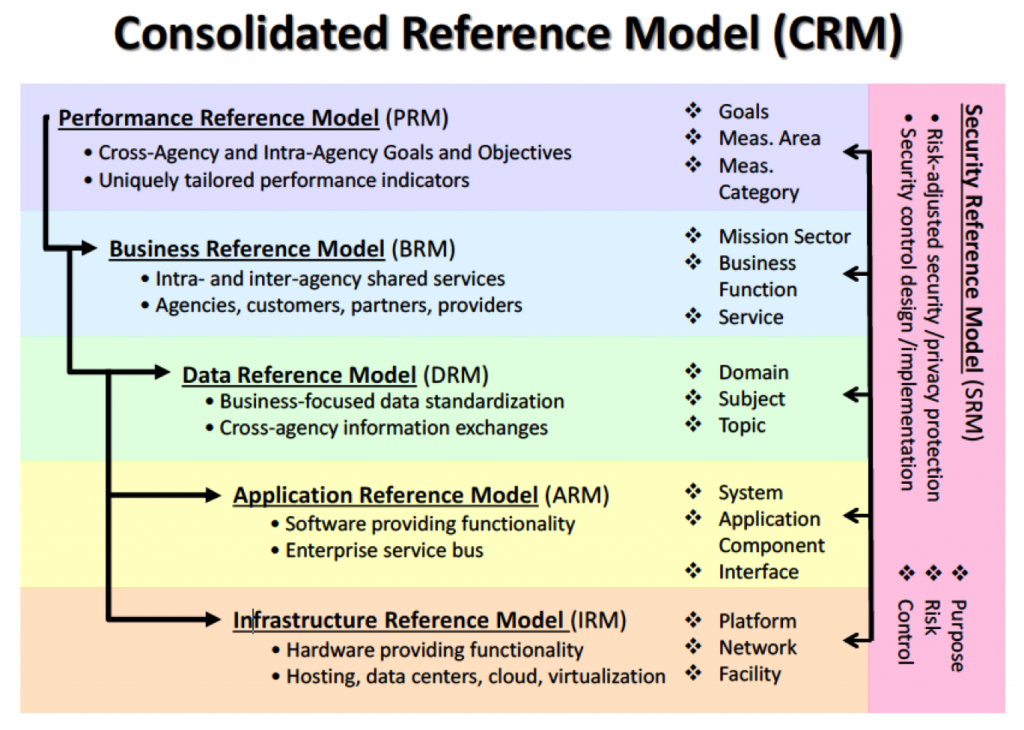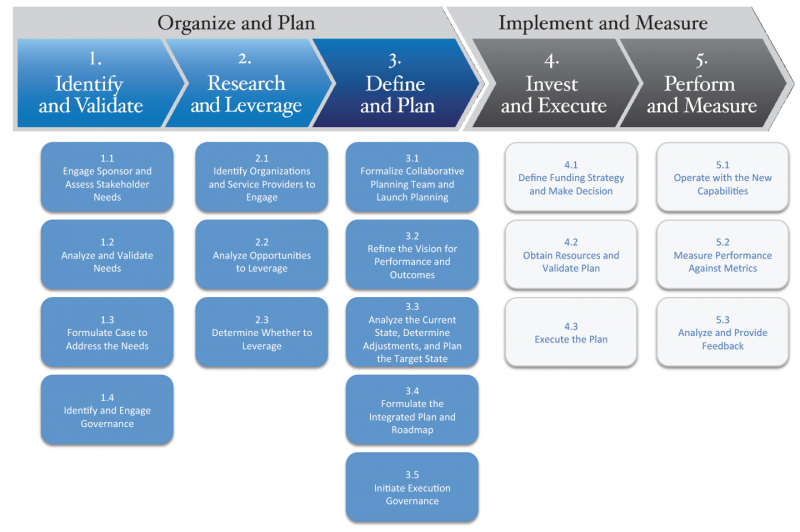The US Federal Enterprise Architecture Framework version 2 (FEAF-II) contains a rich set of tools and methods that can help enterprises accelerate business transformation and new technology enablement by defining and using an enterprise roadmap and a repeatable architecture-driven planning method.
The 2012 OMB document Common Approach to Federal Enterprise Architecture is an executive summary of the full FEAF-II. FEAF-II will set new standards for the enterprise architecture community at large, and for government enterprise architecture in particular. The FEAF-II framework and reference models are well aligned with several significant international efforts such as the Global E-Gov Forum and The International Council for Information Technology in Government Administration.
QualiWare offers comprehensive support for FEAF-II in both product and service offerings. QualiWare is also very supportive of the Collaborative Planning Methodology (CPM), and is a member of The Planning Institute where CPM is maintained. QualiWare’s Enterprise Roadmapping Methodology is based on CPM.
 The early 2013 document Federal Enterprise Architecture Framework Version 2 (FEAF-II) is the current guidance for federal agencies on using enterprise architecture. FEAF-II contains detailed guidance (over 400 pages) for those who implement The Common Approach to Federal Enterprise Architecture, which was released in May 2012 as part of the federal CIO’s policy guidance and management tools for increasing shared approaches to IT service delivery, and presents an overall approach to developing and using Enterprise Architecture in the Federal Government.
The early 2013 document Federal Enterprise Architecture Framework Version 2 (FEAF-II) is the current guidance for federal agencies on using enterprise architecture. FEAF-II contains detailed guidance (over 400 pages) for those who implement The Common Approach to Federal Enterprise Architecture, which was released in May 2012 as part of the federal CIO’s policy guidance and management tools for increasing shared approaches to IT service delivery, and presents an overall approach to developing and using Enterprise Architecture in the Federal Government.
The Common Approach presents an overall approach to developing and using Enterprise Architecture in the Federal Government. The Common Approach promotes increased levels of mission effectiveness by standardizing the development and use of architectures within and between Federal Agencies. This includes principles for using EA to help agencies eliminate waste and duplication, increase shared services, close performance gaps, and promote engagement among government, industry, and citizens.

An EA framework defines the scope of the architecture and the relationship of sub-architecture views to enable analysis, design, documentation, and reporting. The geometry of the FEAF-II framework shows the hierarchical relationship of the major areas of the architecture, which serves to emphasize that strategic goals drive business services, which in turn provide the requirements for enabling technologies.
This framework also shows the relationship of sub-architecture domains, how the architecture can be decomposed into segments (that follow structural or functional lines in the organization) and how shared services would be positioned. Finally, FEAF-II correlates the other areas of governance (capital planning, program management, and human capital management); documentation via an enterprise-wide modernization roadmap, a standard set of core / elective artifacts and reporting via standard reference model taxonomies in each sub-architecture domain.
A key part of FEAF-II is the Consolidated Reference Model (CRM), which equips OMB and Federal agencies with a common language and framework to describe and analyze investments. It consists of a set of interrelated reference models that describe the six sub-architecture domains in the framework: 
- Strategy
- Business
- Data
- Applications
- Infrastructure
- Security
These are designed to facilitate cross-agency analysis and the identification of duplicative investments, gaps and opportunities for collaboration within and across agencies. Also, by applying all six reference models, agencies can establish a line of sight from the strategic goals at the highest organizational level to the software and hardware infrastructure that enable achievement of those goals.
Collectively, the reference models comprise a framework for describing important elements of federal agency operations in a common and consistent way. To apply the framework to an agency’s specific environment, the agency should develop a set of “core” artifacts to document its environment within the framework presented by the CRM. Each sub-architecture domain represents a specific area of the overall framework and has particular artifacts, based on EA best practices, and should be considered a draft list of artifacts which is under continuous revision. The type and depth of documentation actually used by the agency should be guided by the need for detail and answers to questions about requirements, applicable standards, timeframes, and available resources.

The real value to the agency of developing an Enterprise Architecture is to facilitate planning for the future in a way that transforms the government while making it more efficient. The agency can use the EA process to describe the enterprise as it currently is and determine what the enterprise should look like in the future, so that it can make plans to transition from the current state to the future state.
The Collaborative Planning Methodology provides steps for planners to use throughout the planning process to flesh out a transition strategy that will enable the future state to become reality. It is a simple, repeatable process that consists of integrated, multi-disciplinary analysis that involves sponsors, stakeholders, planners, and implementers.
Federal agencies must create an Enterprise Roadmap to document the current and future architecture states at a high level and presents the transition plan for how the agency will move from the present to the future in an efficient, effective manner. The agency’s Enterprise Roadmap combines the artifacts developed for the EA, both current and future state versions, with a plan developed through the Collaborative Planning Methodology, which has been released in the public domain. This creates awareness, visibility and transparency within an organization to facilitate cross-organization planning and collaboration. It maps strategy to projects and budget and helps identify gaps between investment and execution, as well as dependencies and risks between projects.
Brief history:
The Clinger–Cohen Act, formerly the Information Technology Management Reform Act, is a 1996 United States federal law, designed to improve the way the federal government acquires, uses and disposes information technology. The Act essentially mandated the use of enterprise architecture across the US Federal Government, and created what has become the world’s biggest market for enterprise architecture jobs, services and tools. The Executive Office of the President’s Office for Management and Budget, where the Federal Chief Architects sits, created the Federal Enterprise Architecture Framework in the late 1990s and made enterprise architecture a core discipline for CIO offices.
In the early 2000s work on several reference models was initiated, and the FEAF reference models were a central focus area during the coming years, mainly because they connected the architecture work to the capital planning and invest control.
In the mid and late 2000s work on “actionable” enterprise architecture, segment architectures, and business transformation enablement became focal areas. Since the financial crisis and especially with national budget crisis, resources (for everything, including enterprise architecture) are scarce and non-essential work has been decimated. This led to a renewed focus on enterprise architecture as a preferred enterprise planning practice. A complete update of FEAF – called FEAF-II – was released internally in the federal government in 2012, and publicly in early 2014.